Ventricular Tachycardia (Clinical)

Epidemiology and Etiology Epidemiology[2,5] Etiology[5] Pathophysiology Clinical Presentation Family history[3,5] Signs and Symptoms[3,5] Exam[3,5] Diagnosis Diagnosis is by ECG or cardiac monitoring.[6–8] There are 2 primary types of ventricular tachycardia:[6–8] Management The following recommendations are based on the most recent US and UK advanced life support guidelines. Management of ventricular tachycardia is based on whether […]
Acne Vulgaris (Clinical)
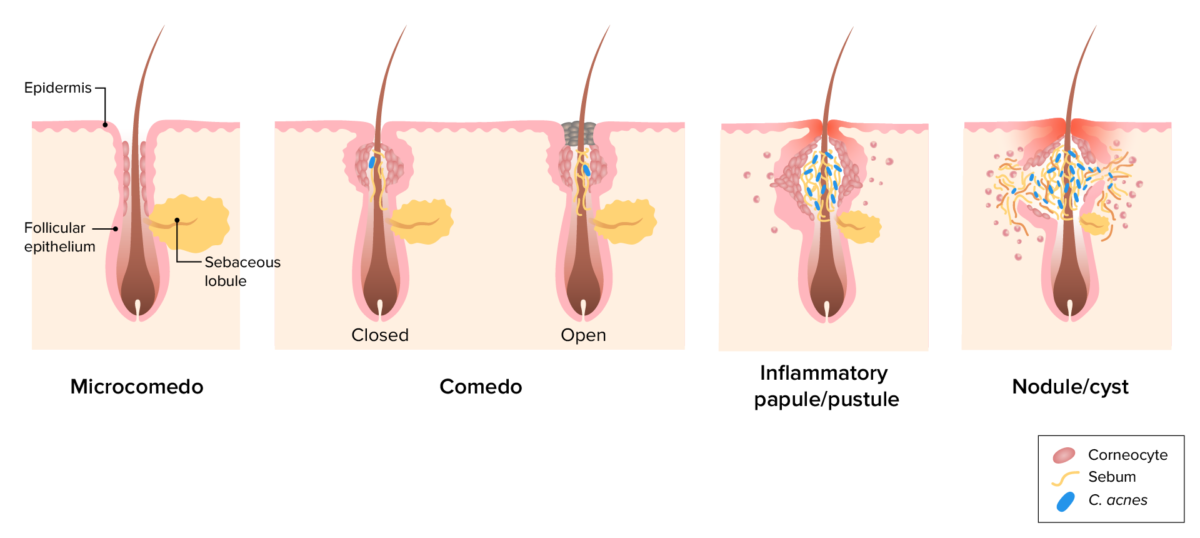
Overview Epidemiology[1,7,10,11] Etiology[1,2,7,10,11] Pathophysiology[1-3,7,10,11] Acne vulgaris is a disorder of the pilosebaceous unit (which includes the hair follicle and sebaceous gland) and is characterized by 4 pathogenic factors: Clinical Presentation Classification and presentation of acne lesions[5,7,9-11] Acne may be noninflammatory, inflammatory, or a mixture of the two.[5] Noninflammatory acne (comedones): Hyperkeratotic plug composed of corneocytes […]
Hidradenitis Suppurativa (Clinical)
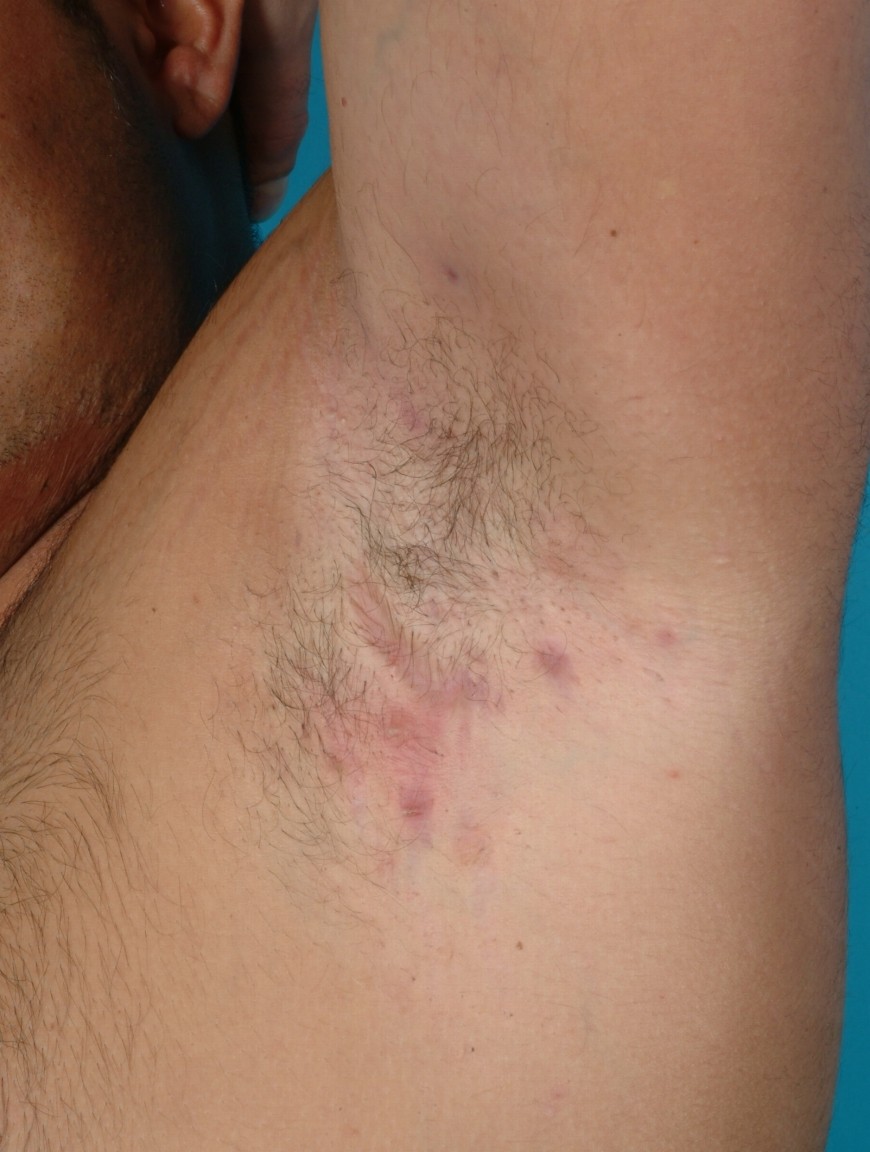
Overview Definition[1,3,4] Hidradenitis suppurativa (HS), also referred to as acne inversa, is a chronic inflammatory skin condition due to occlusion and rupture of hair follicles. Epidemiology[1,3,4,7] Etiology[4,7,8] Hidradenitis suppurativa develops due to blockage of hair follicles and the ducts of sweat glands in the skin. Risk factors include: Pathophysiology Normal physiology The skin is mainly […]
Rosacea (Clinical)
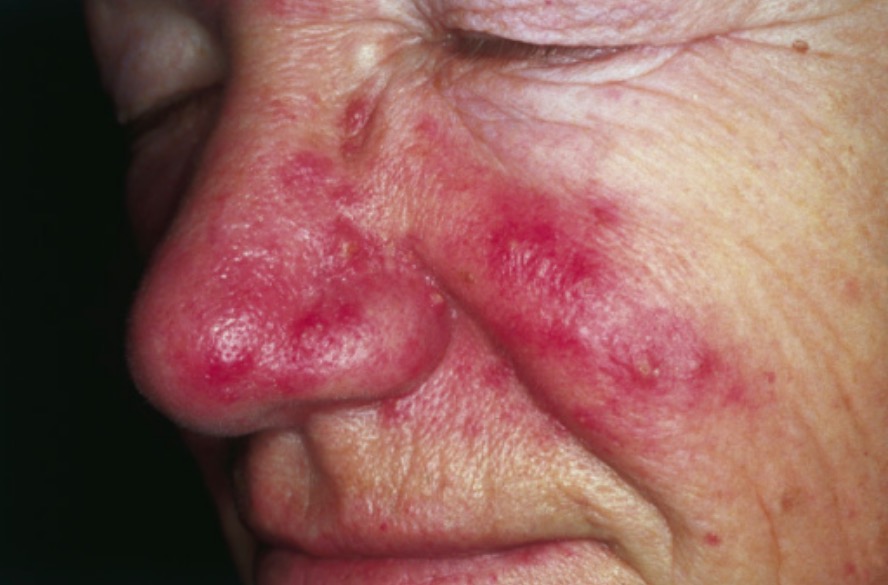
Overview Epidemiology[6,8,9] Etiology[6,8‒10] The exact etiology is not understood, but the following may be associated with rosacea: Pathophysiology[2,6,8,9] The precise mechanism is unknown. There are 2 proposed theories involving neurovascular and inflammatory responses: Clinical Presentation and Diagnosis Clinical presentation Rosacea may present as 1 of several different clinical phenotypes. These phenotypes are not mutually exclusive, […]
Seborrheic Dermatitis (Clinical)
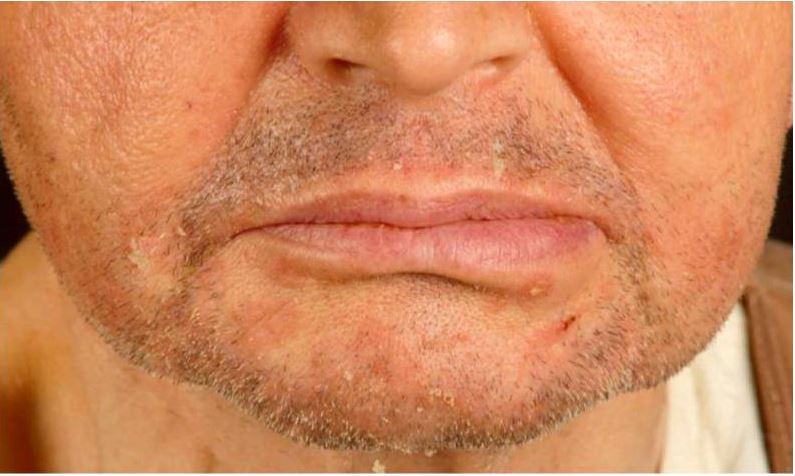
Epidemiology and Etiology Seborrheic dermatitis (SD) is a common chronic skin disorder that is characterized by erythematous patches with greasy, yellowish scales that most often appear in areas with prominent sebaceous glands (scalp, face, upper trunk, and anogenital area).[1,2] Epidemiology[1,2,6] Etiology and pathophysiology[1‒3,6,7] Unclear, but may be affected by the following: Clinical Presentation General features[2,4,6] […]
Atopic Dermatitis (Eczema) (Clinical)
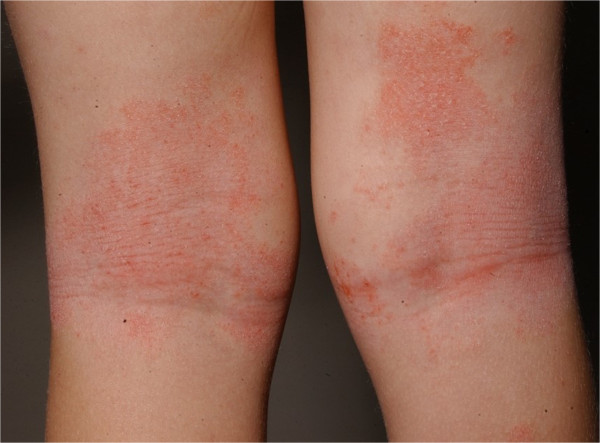
Overview Definition Atopic dermatitis (also known as eczema) is a chronic inflammatory skin condition, characterized by pruritic lesions that are due to skin barrier dysfunction and immune dysregulation. Epidemiology[6,11,15,19] Etiology[6,11,15,19] Common triggers[6,10] Pathophysiology and Clinical Presentation Pathophysiology[11,14,15] Clinical presentation[3,6,10,19] Key features: Based on age: Based on severity: Diagnosis Atopic dermatitis is primarily a clinical diagnosis. […]
Urticaria (Hives) (Clinical)
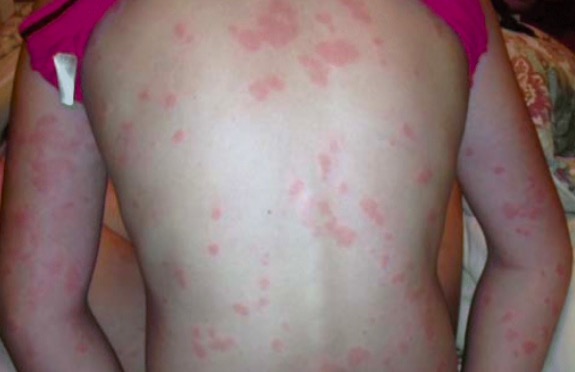
Overview Definition[1,12] Urticaria is a vascular reaction of the skin noted as a transient appearance of slightly elevated plaques (wheals) that are redder or paler than adjacent skin and often accompanied by significant itching. Epidemiology[1,4] Etiology[1,7,11,13] IgE-mediated urticarias (type I hypersensitivity, release of histamine from mast cells) are often due to exposure to certain allergens […]
Psoriasis (Clinical)
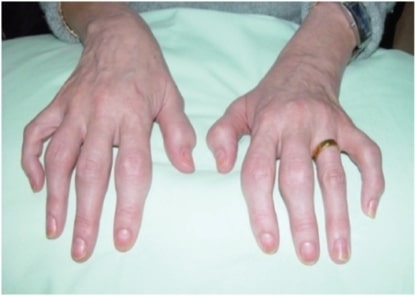
Overview Epidemiology[11,12] Etiology[11,12] Pathophysiology[11‒13] Psoriasis is a complex disease marked by a deregulated T-cell–mediated inflammatory process, resulting in keratinocyte proliferation and dysfunctional differentiation. Clinical Presentation Major subtypes Special sites[11,12] Associated disorders[3,11,12,22,23] Diagnosis Diagnosis is established by the clinical history and physical examination findings. A skin biopsy can be performed if the diagnosis is unclear, though […]
Pityriasis Rosea (Clinical)
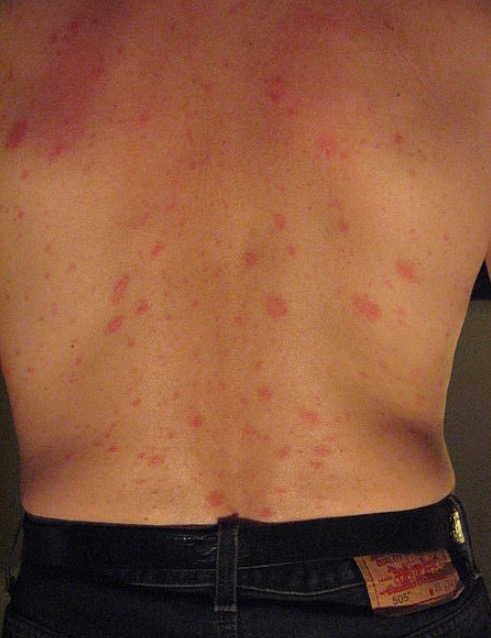
Epidemiology and Etiology Epidemiology[3,4,6] Etiology[1,3,4] Clinical Presentation Prodrome[5,6] Cutaneous eruption[5,6] Primary: Secondary: Atypical presentations[5,6] There are several potential variations to the classic presentation. Some of these may include: Diagnosis and Management Diagnosis[5‒8] Pityriasis rosea is a clinical diagnosis. The following tests may be used if the diagnosis is not clear. Management Pityriasis rosea is a […]
Erythema Nodosum (Clinical)
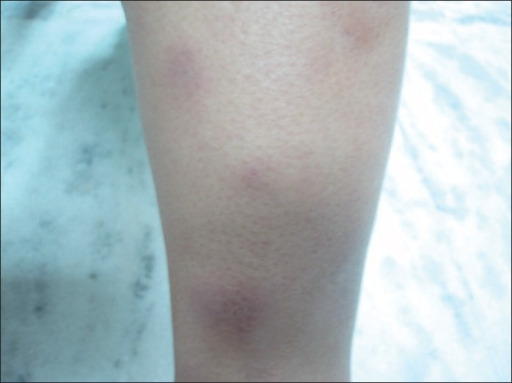
Epidemiology and Etiology Epidemiology[1‒4] Etiology[2‒6] Classification Etiologies Examples Infectious causes Bacterial Streptococcal infections (most common), especially pharyngitis TB Mycoplasma pneumonia Yersinia spp. (especially in Europe) Chlamydia Leprosy (Mycobacterium leprae) Viral Infectious mononucleosis (Eppstein-Barr virus, cytomehalovirus) Hepatitis B and C viruses HIV Fungal Coccidiomycosis Histoplasmosis Blastomycosis Parasitic Giardiasis Amebiasis Toxoplasmosis Noninfectious causes Drugs Penicillins Sulfonamide Oral […]